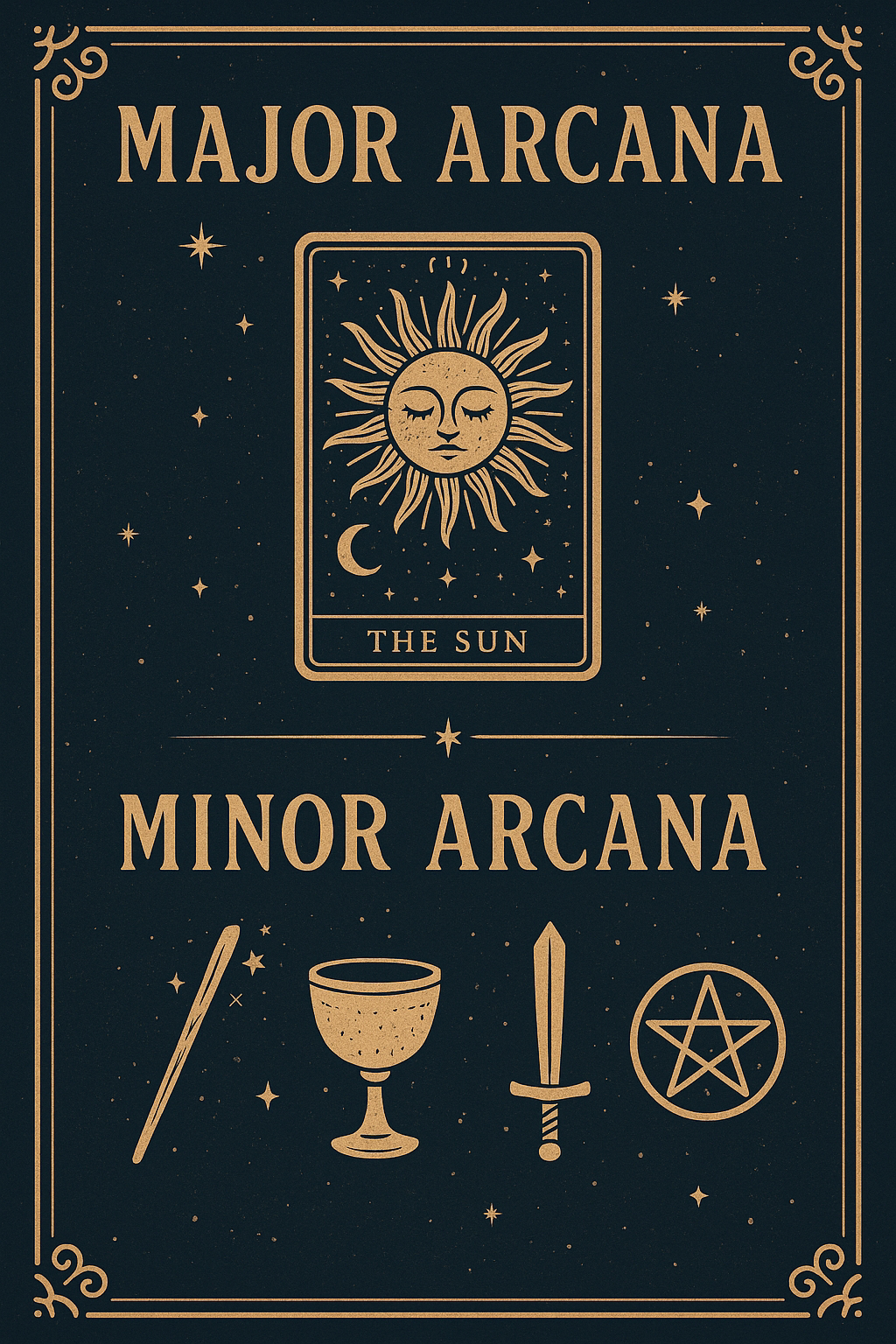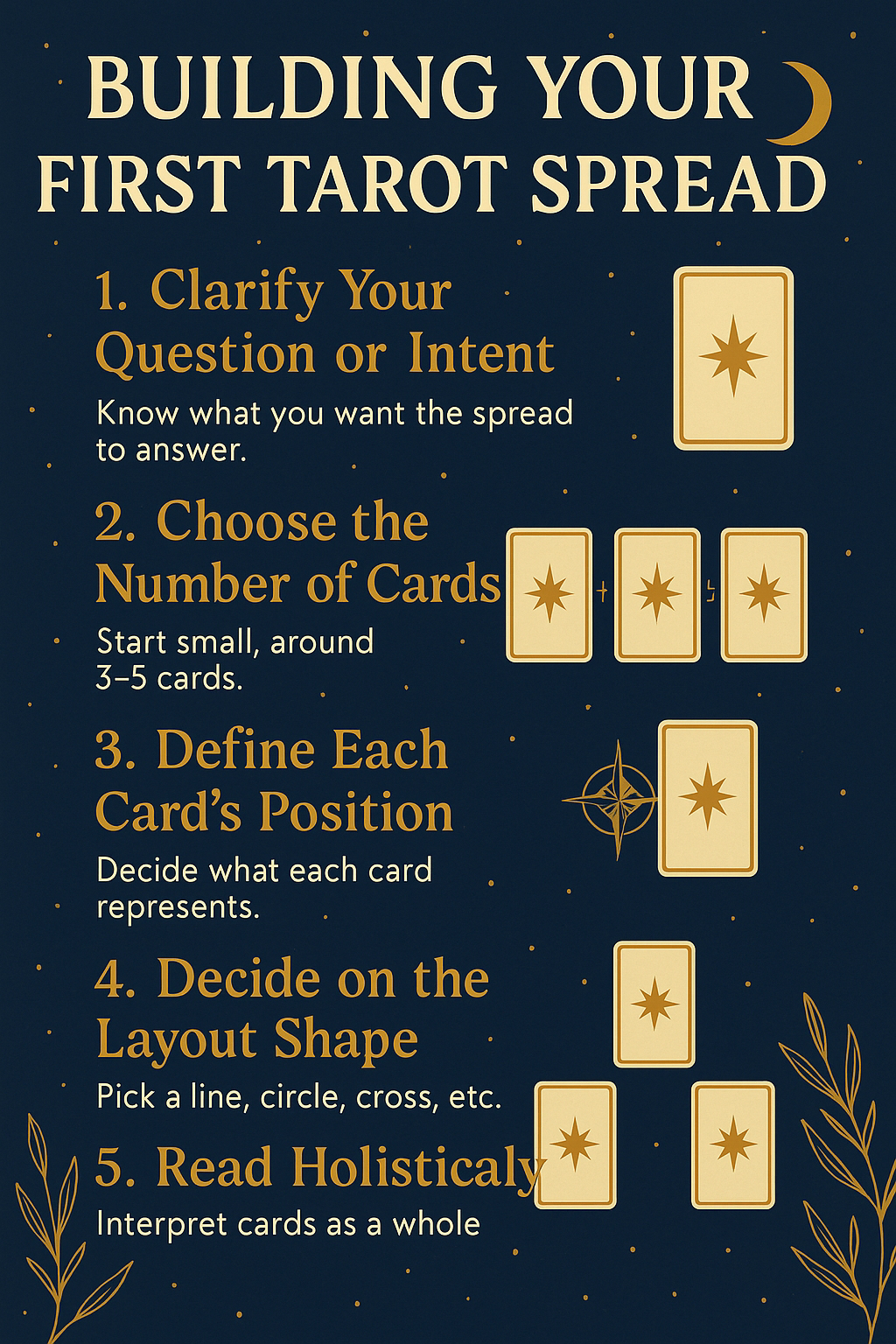But the real magic of Tarot? It happens when you start reading with your intuition.
An intuitive reading isn’t about ditching all structure—it’s about going deeper. It’s about learning to listen to the cards, to yourself, and to the energy of the moment. And once you get comfortable reading intuitively, your Tarot practice becomes more fluid, more personal, and way more powerful.
So if you’re ready to stop second-guessing yourself and start trusting your inner knowing, this post is for you. Let’s explore what intuitive reading really means, and how you can start practicing it with confidence.
✨ What Is Intuitive Tarot Reading?
At its core, intuitive reading is about tapping into your inner sense of meaning, rather than relying solely on memorized definitions. It’s the practice of reading between the lines—noticing images, colors, patterns, emotional impressions, and even the way cards make you feel.
It’s asking:
- What is this card showing me right now, in this moment?
- What message is trying to come through that might not be in the book?
- What’s my gut saying?
Intuitive reading is not about making things up. It’s about forming a relationship with your deck and letting your own insight shape the reading.
🧠 Book Knowledge vs. Intuition – Do You Need Both?
Yes. You do need both—but not equally at every stage of your journey.
When you’re just starting out, it’s totally normal to lean on guidebooks. You’re building a vocabulary, after all. But over time, that framework should start to support your own interpretations, not restrict them.
Think of it like learning to cook: at first you follow recipes exactly. Eventually, you learn how to tweak them, trust your taste, and throw things together by feel.
Tarot works the same way.
🃏 How to Start Reading Tarot Intuitively
Here are some tried-and-true tips to help you grow your intuitive reading skills without tossing your guidebook into the fire (unless you want to—no judgment).
1. Look at the Image First—Before You Look Anything Up
When you draw a card, spend at least a minute just looking at it. Ask yourself:
- What’s the first thing I notice?
- How does this card make me feel?
- What’s happening in the scene?
- Is the character moving? Still? Happy? Worried?
- What colors dominate? What might they represent?
You’re not trying to “get it right”—you’re trying to connect.
Sometimes a single detail—like the direction a figure is facing or the expression on a face—will jump out at you and feel important. Trust that.
2. Let the Card Speak to the Question
Context matters. The same card can mean very different things depending on the question.
For example:
- The Three of Swords might signal heartbreak in a love reading—but in a career reading, it might suggest a necessary separation from a toxic workplace.
- The Sun might mean joy and celebration in one spread, but feel overwhelming or revealing in another.
Ask yourself: How does this card relate to what I’m asking? What layer of meaning fits here?
3. Notice Patterns Across the Spread
Your intuition might not come from a single card—it might come from the relationship between them.
Look for:
- Repeating numbers or suits
- All Major Arcana (big life themes) vs. mostly Minors (daily life)
- Contrasting energies—one card moving forward, another pulling back
- Common imagery like water, fire, animals, or posture
These threads can create a story your intuition is better at noticing than your rational mind.
4. Let Your Emotions Guide You
Intuition often speaks in feelings.
If a card gives you a sense of discomfort, calm, urgency, or even excitement—pay attention. Your emotional reaction can be part of the message.
Sometimes your intuition will guide you to rephrase the question, pull a clarifying card, or even pause the reading altogether. That’s okay. The cards are part of the conversation—not the entire voice.
5. Use Stream-of-Consciousness Journaling
One of the best ways to build your intuitive skills is to journal your readings using free writing.
Try this:
- Pull a card.
- Set a timer for 5 minutes.
- Write everything that comes to mind about the image, emotion, symbolism, and message—without stopping or editing.
- Don’t worry about whether it matches the “book meaning.”
When the timer ends, then look up the card’s traditional meaning. You’ll be surprised how often your intuitive message aligns—or expands on—it.
6. Tell a Story
Imagine you’re narrating a scene.
- What’s happening in the card?
- Who’s the main character?
- What just happened—and what’s about to happen?
- What’s the overall mood or lesson?
This storytelling method helps your intuitive brain kick in, bypassing the need to be “right.”
7. Don’t Be Afraid of Being Wrong
Here’s the truth: you will make mistakes. We all do. Even professional readers.
But intuition grows stronger through practice—not perfection. The more you read, the more you’ll learn to recognize when a message rings true and when it doesn’t.
Keep a tarot journal. Revisit old readings. Reflect on what turned out to be accurate, and what you might read differently now.
It’s all part of the learning process.
🛑 What If Nothing Comes Through?
If you pull a card and feel… absolutely nothing, that’s okay.
Try:
- Looking at the image and describing it out loud
- Pulling a second card for clarity
- Meditating with the card for a few minutes
- Asking yourself: Is my energy clear? Am I too distracted or tired right now?
Sometimes your intuition just needs a minute—or a better question.
🔮 A Few Fun Ways to Strengthen Intuition
If you’re ready to flex your intuitive muscles, try these practices:
- Daily draw with intuitive interpretation (write or speak your first impressions)
- Do blind readings by covering the card name and number
- Practice reading for fictional characters from books or shows
- Swap decks – a new visual style can spark new intuitive insights
- Read for a friend using only visuals – no book allowed!
🧡 Final Thoughts
Reading Tarot intuitively is a skill—and like any skill, it takes time, trust, and patience to develop. But the more you lean in and let go of the need to be perfect, the more your readings will come alive with personal wisdom and authentic insight.
Remember: your intuition is a powerful tool, and your Tarot deck is just one way it speaks to you. Trust it. Nurture it. Let it guide you.
Because at the end of the day, you are the magic behind the cards.





